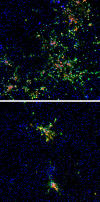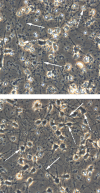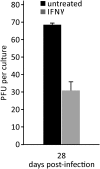Interferon Gamma Prolongs Survival of Varicella-Zoster Virus-Infected Human Neurons In Vitro
- PMID: 25948748
- PMCID: PMC4473560
- DOI: 10.1128/JVI.00594-15
Interferon Gamma Prolongs Survival of Varicella-Zoster Virus-Infected Human Neurons In Vitro
Abstract
Infection of human neurons in vitro with varicella-zoster virus (VZV) at a low multiplicity of infection does not result in a cytopathic effect (CPE) within 14 days postinfection (dpi), despite production of infectious virus. We showed that by 28 dpi a CPE ultimately developed in infected neurons and that interferon gamma inhibited not only the CPE but also VZV DNA accumulation, transcription, and virus production, thereby prolonging the life of VZV-infected neurons.
Copyright © 2015, American Society for Microbiology. All Rights Reserved.
Figures




References
Publication types
MeSH terms
Substances
Grants and funding
LinkOut - more resources
Full Text Sources
Research Materials
Miscellaneous

